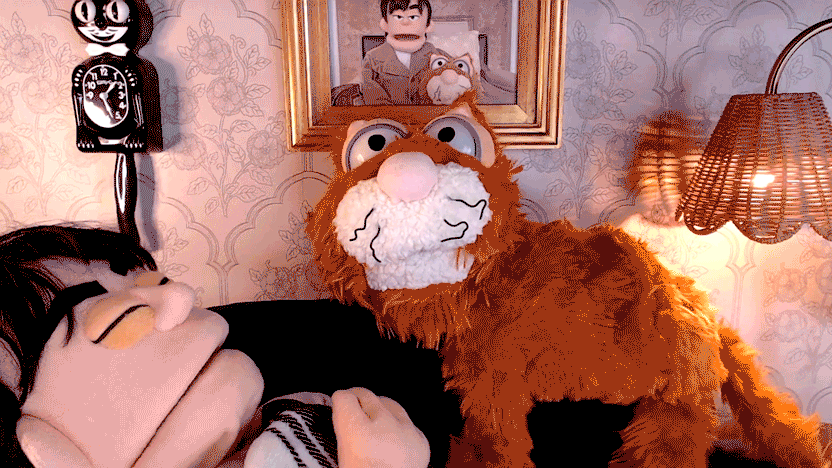How Puppets Help Kids Build Vocabulary and Confidence
How Puppets Help Kids Build Vocabulary and Confidence
Puppets aren’t just cute toys—they’re powerful language-learning tools. For children ages 1–8, puppets can transform ordinary moments into playful, emotionally rich opportunities to build vocabulary, strengthen expressive language, and boost confidence.
Whether at home or in a classroom, puppets invite children to talk, imagine, and interact in ways that feel safe and exciting. Used intentionally, they become secret weapons for early literacy and communication skills.
Why Puppets Work So Well for Language Development
Puppets have a unique way of captivating young learners. They:
🪄 Lower social pressure — Children are often more willing to talk to a puppet than to an adult directly.
🧠 Spark imaginative play, which naturally expands vocabulary and sentence complexity.
🗣 Model language in engaging ways, using repetition and expression.
❤️ Create emotional safety, allowing shy children to find their voice.
✋ Encourage turn-taking and conversation, key for social language skills.
👉 A puppet acts as both a conversation partner and a storytelling tool, making language practice feel like play, not instruction.
Step 1: Pick a Puppet With Personality
The best puppets for language-building are easy to animate and have a clear, engaging personality.
✨ Tips:
Choose a soft animal or character with a movable mouth or expressive face.
Give the puppet a fun name and a distinct voice.
Let your child help decide the puppet’s “character” (e.g., silly, curious, shy, bossy).
👉 A strong personality makes the puppet feel real, which increases your child’s willingness to engage verbally.
Language focus: naming, descriptive vocabulary, expressive language
Step 2: Use Puppets to Model Vocabulary
Puppets are perfect for introducing new words naturally through playful conversation.
Examples:
Puppet: “This oatmeal is steamy! What else is steamy?”
Puppet: “I see a sparkly star on your shirt. Sparkly means it shines like tiny lights!”
Puppet: “Hmm… I’m feeling grumpy today. Do you know what grumpy means?”
👉 When a puppet introduces vocabulary in context, children are more likely to listen, remember, and use the words themselves later.
✨ Repeat the new words several times in slightly different contexts during play.
Language focus: descriptive vocabulary, emotional language, contextual learning
Step 3: Invite Conversational Turn-Taking
Children often feel more comfortable having two-way conversations with puppets than with adults.
Try simple back-and-forth exchanges:
Puppet: “Hi! What’s your name?”
Child: “Sophie.”
Puppet: “Sophie! That’s a beautiful name. What did you have for breakfast?”
👉 These conversations teach kids how to take turns, answer questions, and expand their responses—essential skills for language development and school readiness.
✨ For shy children, start with yes/no or one-word questions, then gradually expand.
Language focus: conversational skills, question/answer structure, turn-taking
Step 4: Use Puppets in Storytelling
Puppets bring stories to life in a way that captivates children’s attention and deepens vocabulary exposure.
Ideas:
Use puppets to retell familiar stories like The Three Little Pigs or Brown Bear, Brown Bear.
Create original puppet stories that feature new vocabulary or themes.
Let your child use puppets to act out favorite books after reading.
👉 Storytelling with puppets encourages children to hear and use language in meaningful, structured ways, which builds comprehension and expressive skills.
✨ See also: Story Retelling Activities That Build Comprehension
Language focus: narrative structure, sequencing, expressive vocabulary
Step 5: Use Puppets to Explore Emotions and Social Vocabulary
Puppets are excellent for helping children name and navigate feelings.
Examples:
Puppet: “I’m feeling nervous about starting preschool. What should I do?”
Puppet: “Uh oh… I grabbed the toy without asking. What should I say?”
Child coaches the puppet through social scenarios.
👉 This gives children language for emotions and problem-solving in a safe, playful way.
✨ Bonus: Puppets can also act as “neutral third parties” in conflict situations, helping kids talk through issues more easily.
Language focus: emotional vocabulary, social language, pragmatic skills
Step 6: Make Puppets Part of Daily Routines
The magic of puppets grows when they’re used consistently in small, daily moments:
A morning puppet greeting ritual.
A “word of the day” puppet segment at breakfast.
Puppets announcing transitions or storytime.
Puppet reflections at bedtime.
👉 These consistent touchpoints reinforce vocabulary and conversational habits over time, without requiring extra planning.
✨ See also: Using Puppets to Transition Kids Into Learning Mode
Helpful Links
👉 Early Learning & School Readiness Hub
👉 Story Retelling Activities That Build Comprehension
👉 Using Puppets to Transition Kids Into Learning Mode
👉 Songs & Fingerplays That Anchor the Day
Puppets are deceptively simple but incredibly powerful tools for early literacy. By giving children a playful, low-pressure way to talk, imagine, and experiment with language, puppets help expand vocabulary, strengthen expressive skills, and build confidence—especially for shy or hesitant speakers.
Whether you use them during stories, routines, or imaginative play, puppets can become beloved learning companions that turn everyday moments into rich language experiences.
This content is for educational purposes and is not a substitute for professional medical or psychological advice.
Popular Parenting Articles


